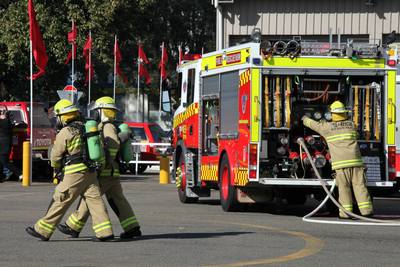Choice: the solution for public safety
By Geoff Peck, Technology and Solution Architect, Tait Communications
Thursday, 01 August, 2013
In a world of broadening critical communications methods, solutions that don’t offer choice aren’t solutions - they’re constraints.
There’s a line in the James Bond film Skyfall, where 007’s tech support guy, Q, says: “I can get more done in my pyjamas before my first cup of Earl Grey, working on my laptop, than you can do in the field in a year.”
Daniel Craig’s character may be fictional, but the situation he finds himself in is a stark reality. Today, policing is just as much about police officers being ‘connected’ as it is about being on the street.
Technology - friend or foe?
Technology is a key weapon against organised crime, antisocial behaviour, foreign and domestic terrorism, and of course cybercrime - all of which demand new policing strategies and tactics. Tech-savvy, highly mobile criminals operating internationally and across borders are causing a seismic shift in public safety priorities.
While there will never be a move away from the universal ‘protect and serve’ ethos, today’s policing priority is prevention, which is why technology is being used more and more as a weapon for the good guys, too. Agencies across the world have begun early-stage adoption of smart devices to gain field intelligence and mobile efficiency, keeping police focused on fighting crime instead of paperwork headaches.
Mobility challenges
With limited budgets and limited manpower, making the right choices for technology to fight crime has become a more critical than ever before.
Over the past decade, the technology we use at home has advanced beyond that which has typically been provided in the workplace. Organisations have resisted providing an information-rich mobile communications environment because of the demands it places on support. But it’s a trend that’s become impossible to ignore. And now more and more organisations are embracing BYOD (bring your own device) as a strategy as they realise the capital savings they can make, not to mention the user satisfaction that comes with it.

The mythical uber-device, or single network that does everything for public safety personnel, is the kind of unbelievable gadget you’d see in a Bond movie. A more pragmatic, evolutionary approach is to develop fit-for-purpose solutions that bring together mobile LMR narrowband and broadband LTE networks. These solutions will support and work across any end-user mobile and portable device, intelligently and automatically synchronising to provide secure information for crime prevention and command.
Mission-critical and business-critical - do I need both?
Public safety communications must be ultraresilient, reliable and secure. Networks and services must have assured availability, particularly at times of crisis or in a major incident. Recent events around the world, including the US East Coast hurricanes, New Zealand earthquakes and Boston Marathon bombing, are stark reminders. Data services over broadband bearers, such as LTE, must be able to provide a quality of service equivalent to today’s existing narrowband voice technologies, such as TETRA and P25.
The right mix and choices of technology produces a ‘force multiplier’, increasing efficiency, effectiveness and safety.
With broadband data being streamed to the front line - in addition to information from smartphones, tablet PCs and the mass of other technologies crammed onto utility belts and bolted into vehicles - first responders are literally weighed down by data and devices.
Just generating a greater volume of dumb data, that leads to ‘info-besity’ or ‘informed bewilderment’, is a real and present issue.
The right choices call for an evolutionary approach to maximise the collective effectiveness of the various communication technologies being deployed. That means getting more intelligent information out of existing communication technologies working seamlessly together.

Choice: the only option for public safety
Consumer-orientated technology is all around us, and the functionality that’s now commonplace in our homes, offices and vehicles has led to demand for similarly smart professional-grade technology. What’s more, those solutions that combine a mix of intelligently connected, eclectic elements can better provide communications for business-as-usual, as well as performing their mission-critical purpose.
Critical communications solutions that don’t allow choice aren’t solutions - they’re constraints. As organisations and their communications requirements change, choice should remain, so that the solution - or specific elements of it - can change too.
Choice is driving this demand because we’re all familiar with what technology can do for us personally. Why should critical communications be any different?
Why P25 technology remains a good fit for public safety communications
Digital LMR technology ensures police officers, firefighters and emergency management teams can...
From past to present: leveraging satellite data for better disaster resilience
Whether monitoring flood-prone regions or assessing wildfire-prone landscapes, historical...
Lancashire Police adds in-car video to full vehicle fleet
Motorola Solutions' M500 in-car video solution observes a vehicle's environment from...





